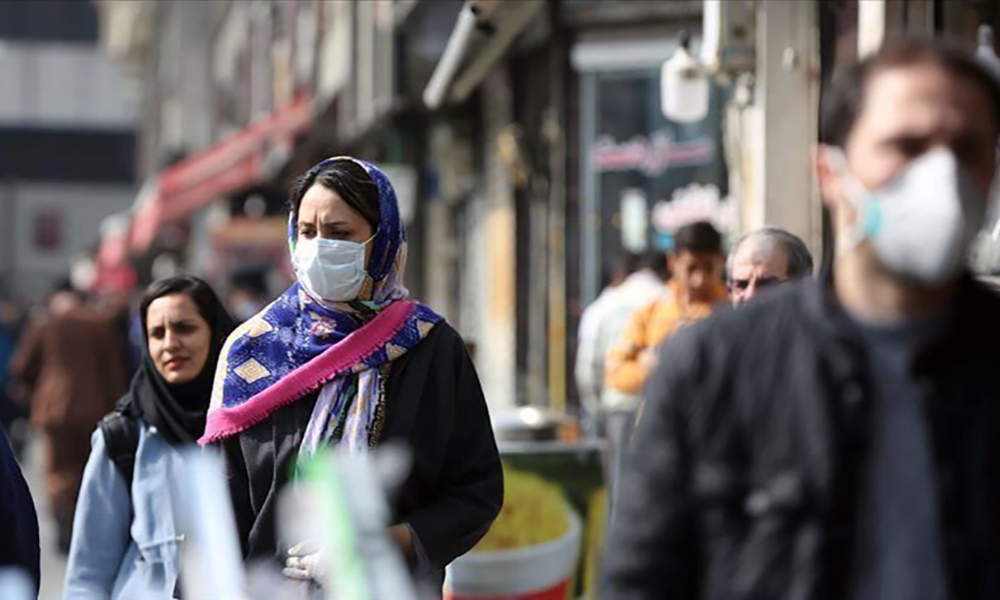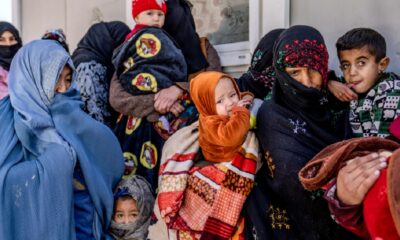COVID-19
India suspends IPL as COVID cases cross 20 million

India suspended its most popular sports tournament on Tuesday and the country’s opposition chief called for a nationwide lockdown as the number of coronavirus infections climbed past 20 million, a dismal milestone crossed only by the United States.
Cricket officials suspended the money-spinning Indian Premier League (IPL), after the country added 10 million cases in just over four months, versus the more than 10 months taken for the first 10 million, Reuters reported.
“These are difficult times, especially in India, and while we have tried to bring in some positivity and cheer, it is imperative that the tournament is now suspended and everyone goes back to their families and loved ones in these trying times,” the IPL said in a statement.
With 3.45 million active cases, India recorded 357,229 new infections over the last 24 hours, while deaths rose 3,449 for a toll of 222,408, health ministry data showed.
Experts say actual numbers could be five to 10 times higher, however.
“The only way to stop the spread of corona now is a full lockdown…GOI’s inaction is killing many innocent people,” Gandhi, a Congress member of parliament, said on Twitter, referring to the government.
Prime Minister Narendra Modi’s government is reluctant to impose a national lockdown for fear of the economic fallout, but several states have imposed social curbs, Reuters reported.
The impoverished eastern state of Bihar ordered a lockdown until May 15 to curb the virus, Chief Minister Nitish Kumar said on Twitter. With more than 100,000 infections, its death toll is nearing 3,000, government figures show.
The cricket-obsessed nation’s halt to the IPL tournament was a result of the virus crisis, its chairman, Brijesh Patel, told Reuters. The tournament, with an estimated brand value of $6.8 billion, was being played without spectators to a huge television audience this year but has been severely criticized for continuing at a time when the country’s healthcare system is on the brink of a collapse.
The surge of the highly infectious Indian variant has swamped the health system and depleted supplies of life-saving oxygen, while sufferers have died in ambulances and car parks outside hospitals.
Rows of funeral pyres set up in parks and other open spaces are being used to cremate the overflow of corpses.
Modi has been criticized for not moving sooner to limit the latest wave of infections and for letting millions of largely unmasked people attend religious festivals and crowded political rallies during March and April.
But a glimmer of hope surfaced in comments on Monday by a health ministry official who said infections in some regions were plateauing, Reuters reported.
Government modelling points to a peak by Wednesday, a few days earlier than a previous estimate, since the virus has spread faster than expected.
India’s surge has coincided with a dramatic drop in vaccinations, hit by problems with supplies and delivery.
At least three states, including Maharashtra, the richest and home to the commercial capital of Mumbai, reported scarcity of vaccines, shutting down some vaccination centres.
On Monday the state had injected 79,491 doses, down from a record 534,372 a week ago.
In Modi’s adjoining home state of Gujarat, the three largest cities of Ahmedabad, Surat and Vadodara limited vaccines to those aged between 18 and 44, officials said.
COVID-19
WHO declares end to COVID global health emergency

The World Health Organization said Friday that COVID-19 no longer qualifies as a global emergency, marking a symbolic end to the devastating coronavirus pandemic that triggered once-unthinkable lockdowns, upended economies and killed millions of people worldwide.
The announcement, made more than three years after WHO declared the coronavirus an international crisis, offers some relief, if not an ending, to a pandemic that stirred fear and suspicion, hand-wringing and finger-pointing across the globe, AP reported.
The U.N. health agency’s officials said that even though the emergency phase was over, the pandemic hasn’t finished, noting recent spikes in cases in Southeast Asia and the Middle East.
WHO says thousands of people are still dying from the virus every week, and millions of others are suffering from debilitating, long-term effects.
“It’s with great hope that I declare COVID-19 over as a global health emergency,” WHO Director-General Tedros Adhanom Ghebreyesus said.
“That does not mean COVID-19 is over as a global health threat,” he said, warning that new variants could yet emerge. Tedros noted that while the official COVID-19 death toll was 7 million, the real figure was estimated to be at least 20 million.
Tedros said the pandemic had been on a downward trend for more than a year, acknowledging that most countries have already returned to life before COVID-19.
He bemoaned the damage that COVID-19 had done to the global community, saying the pandemic had shattered businesses, exacerbated political divisions, led to the spread of misinformation and plunged millions into poverty.
When the U.N. health agency first declared the coronavirus to be an international crisis on Jan. 30, 2020, it hadn’t yet been named COVID-19 and there were no major outbreaks beyond China.
More than three years later, the virus has caused an estimated 764 million cases globally and about 5 billion people have received at least one dose of vaccine.
In the U.S., the public health emergency declaration made regarding COVID-19 is set to expire on May 11, when wide-ranging measures to support the pandemic response, including vaccine mandates, will end. Many other countries, including Germany, France and Britain, dropped most of their provisions against the pandemic last year.
When Tedros declared COVID-19 to be an emergency in 2020, he said his greatest fear was the virus’ potential to spread in countries with weak health systems.
Most recently, WHO has struggled to investigate the origins of the coronavirus, a challenging scientific endeavor that has also become politically fraught.
COVID-19
COVID-19 in Iran: Nearly 900 new cases, 24 deaths recorded

The Iranian health ministry announced on Sunday that more than 890 new cases of COVID-19 have been identified across the country during the past 24 hours, adding that 24 patients have died in the same period of time, Fars News Agency reported.
“A sum of 891 new patients infected with COVID-19 have been identified in the country based on confirmed diagnosis criteria during the past 24 hours,” the Iranian Health Ministry’s Public Relations Center said on Sunday, adding, “454 patients have been hospitalized during the same time span.”
The ministry’s public relations center said 611 people infected with COVID-19 are in critical condition.
COVID-19
China says 200 million treated, pandemic ‘decisively’ beaten

China says more than 200 million of its citizens have been diagnosed and treated for COVID-19 since it lifted strict containment measures beginning in November.
With 800,000 of the most critically ill patients having recovered, China has “decisively beaten” the pandemic, according to notes from a meeting of the ruling Communist Party’s all-powerful Politburo Standing Committee presided over by President and party leader Xi Jinping, AP reported.
China enforced some of the world’s most draconian lockdowns, quarantines and travel restrictions and still faces questions about the origins of the virus that was first detected in the central Chinese city of Wuhan in late 2019. Heavy-handed enforcement prompted rare anti-government protests and took a heavy toll on the world’s second-largest economy.
The official Xinhua News Agency quoted Xi as saying that policies to control the outbreak had been “entirely correct.” The abrupt lifting in November and December of the “zero COVID” policy that had sought to eliminate all cases of the virus led to a surge in infections that temporarily overwhelmed hospitals.
Case numbers have since peaked and life has largely returned to normal, although international travel in and out of China has yet to return to pre-pandemic levels.
China is now transitioning to a post-pandemic stage after a fight against the outbreak that was “extraordinary in the extreme,” Xinhua said.
The government will continue to “optimize and adjust prevention and control policies and measures according to the times and situations with a strong historical responsibility and strong strategic determination,” Xinhua said.
-

 Sport4 days ago
Sport4 days agoACL fever grows as fixtures finalized
-

 World5 days ago
World5 days agoUS will not take part in any Israeli retaliatory action against Iran
-

 Latest News4 days ago
Latest News4 days agoOver 50 people dead in traffic accidents over Eid
-

 Latest News4 days ago
Latest News4 days agoUS identifies Kabul airport suicide bomber
-

 Business4 days ago
Business4 days agoAfghanistan-Kazakhstan chamber of commerce opens in Herat
-

 Latest News5 days ago
Latest News5 days agoGood rains enable DABS to increase power production in Kabul
-

 World4 days ago
World4 days agoIsraeli military vows response to Iran attack as calls for restraint mount
-

 Sport2 days ago
Sport2 days agoATN secures exclusive rights to broadcast Paris 2024 Olympics





























